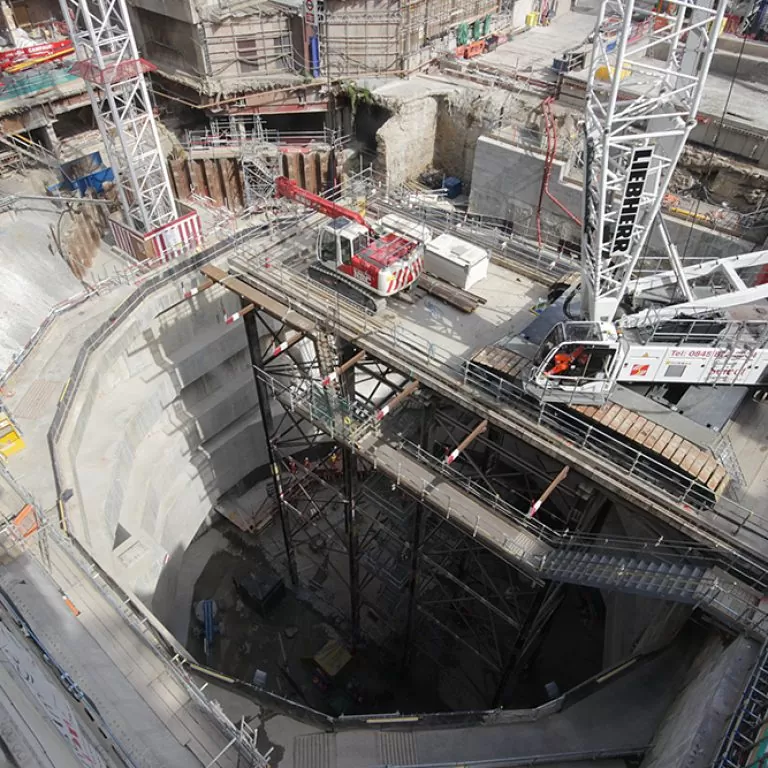
News Documenting rail projects with time-lapse and site monitoring
The versatile nature of time-lapse as a visual medium means that it can be adapted to any situation, including many potentially dangerous environments and therefore it can be applied very effectively to the projects along the UK’s railway network.
Opening to the public in 1825, the UK’s rail system is the oldest in the world and now boasts 2,500 stations, 40,000 bridges & 20,000 miles of rail, all owned by Network Rail.
With over 1.7 billion passenger journeys per year, such an extensive network requires constant maintenance and high standard of upkeep in order to keep it operational, as well as continuing to upgrade such infrastructure.
In this blog we consider the benefits of utilising time-lapse in such challenging conditions.
As rail networks are a fundamental part of the UK’s public transport, this means that refurbishments and upgrades need to be completed as quickly as possible to minimise disruption.
In Easter 2015, Network Rail carried out work on the West Coast mainline in Watford, installing a new 450-tonne bridge to replace the former, weathered structure.
Using time-lapse photography, they documented the short-term improvements during the closure – a closure that resulted in passengers needing to take alternative services to and from London Euston.
The final edit – incorporating time-lapse from Time-Lapse Systems and further footage & video elements from Aerial Images – highlights the benefits of higher capture rates to capture and detail peak activity, and allowed Network Rail to successfully communicate the nature of the improvements to the their passengers and the public.
Other works carried out on the railway can amount to longer turnarounds, particularly when construction covers a wide area or needs to take place in situ.
The best professional time-lapse companies will offer completely bespoke camera systems, with secure installation at a suitable height and distance included in any costs.
The aerial perspective in the image at the top of this blog, showing excavation and installation work for Crossrail’s Moorgate Station in London, is another example of using time-lapse for a rail project, achieved by fixing a camera system to an exposed wall of a neighbouring building.
In this particular case, the high-angled position is needed due to lack of space on site and to successfully capture the excavation of the main shaft. However, due to a clever installation of the system, the shot also works well aesthetically.
Access to the secure fixing position could only be achieved using a cage, suspended by a crane. This itself was only achievable thanks to the correct health and safety procedures and extensive training for the engineer.
Crossrail currently have 73 miles of line under development and will have helped to increase London’s rail capacity by 10% following its completion in December 2019.
A further benefit of using a professional time-lapse company is remote site monitoring, allowing clients to view projects remotely – even in the most heavily concentrated and busy environments.
BAM Nuttall, Bauer and Kier were just some of the parties involved in the Moorgate Station project that were able to take advantage of this service.
On any given construction project, there are likely to be more than one stakeholder and so it is important that all invested bodies are kept up-to-date with the progress on site.
Remote site monitoring allows for this, as secure web-based viewers can be accessed by multiple parties from anywhere in the world.
From a time-lapse point-of-view, creating the best possible edits during and at the end of a project is impossible with the remote access. The camera’s settings can be altered to allow for changing weather and lighting conditions, and to ensure continuous capture in optimum quality for the duration.
Time-lapse videos like this one below, are also an effective way to share such infrastructural developments with wider publics.
Another joint collaboration between Time-Lapse Systems and Aerial Images, this particular sequence is part of Network Rail’s initiative to keep the public updated on the progress of various upgrades and maintenance work across their lines.
Showing a recent electrical upgrade of Farnworth Tunnel as part of the Manchester to Preston route, this edit includes computerised imagery detailing particular phases of development, as well as text descriptions, video and time-lapse.
Sequences like these work to inform online audiences of important developments to the UK’s rail networks, therefore building stronger affiliations between such services and the publics who use them. Although incredibly challenging in many respects, the benefits of using time-lapse and site monitoring on rail projects can be highly rewarding. And with the help of professional companies such as Time-Lapse Systems, they are achievable.